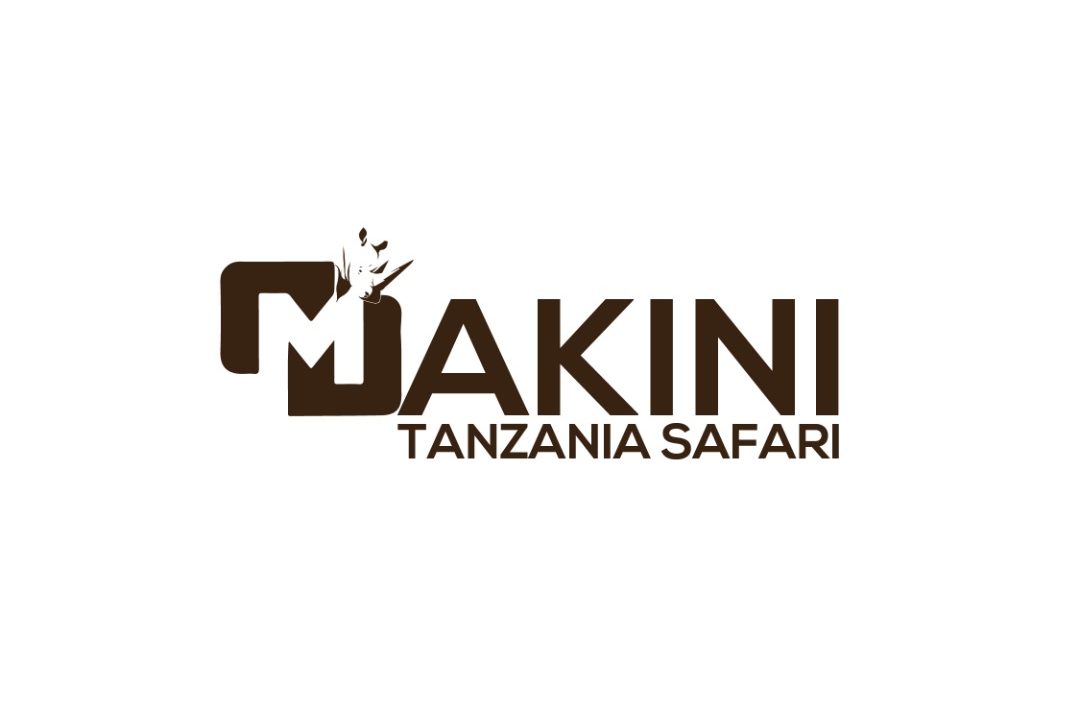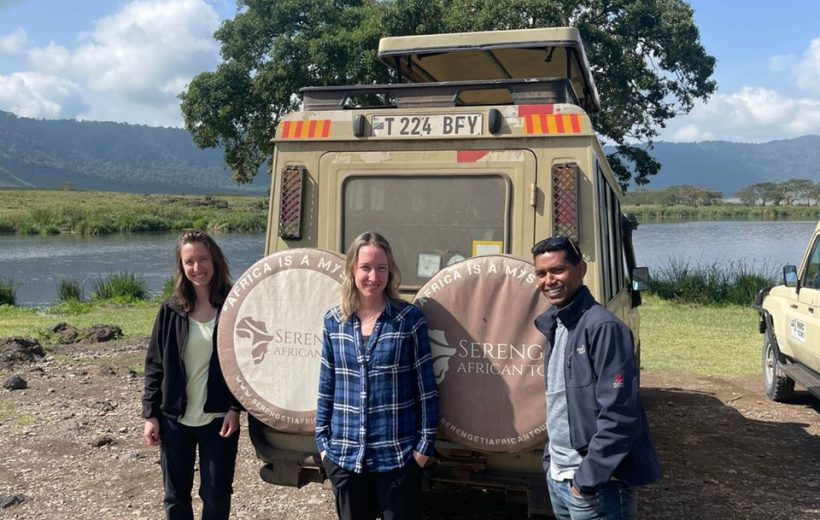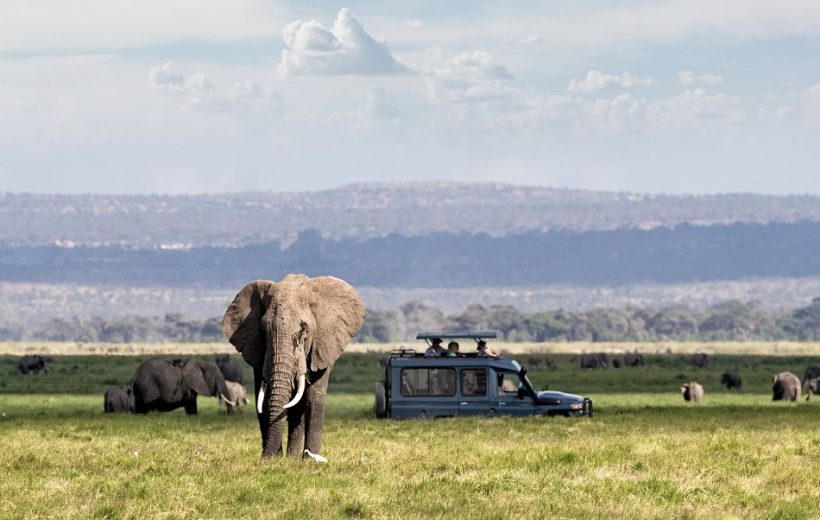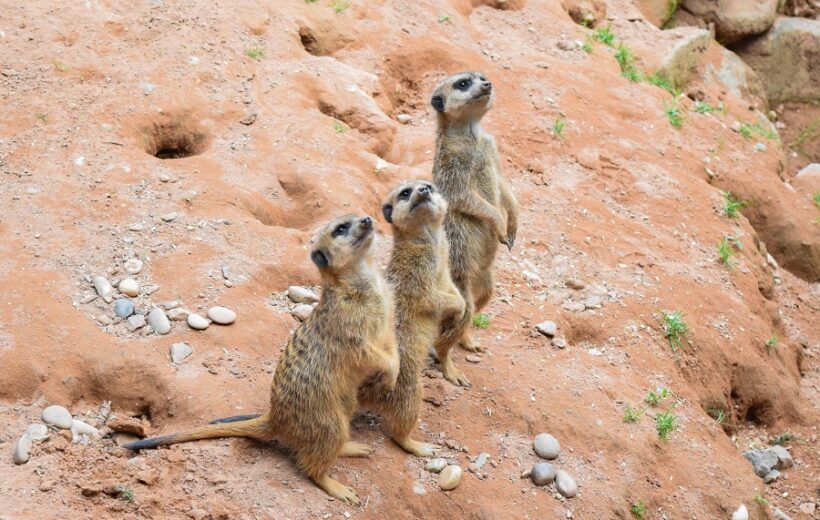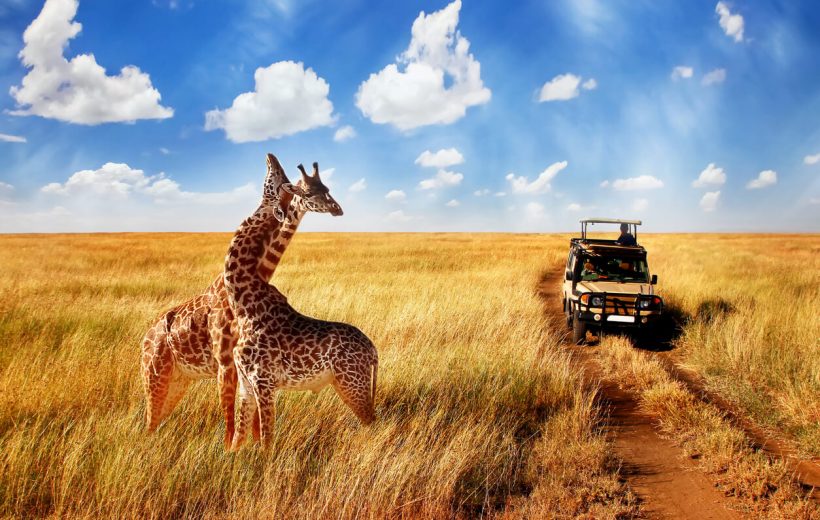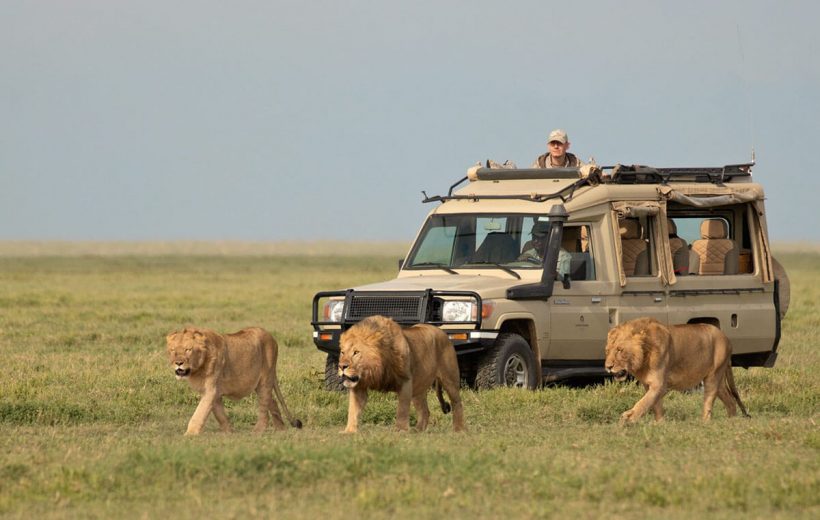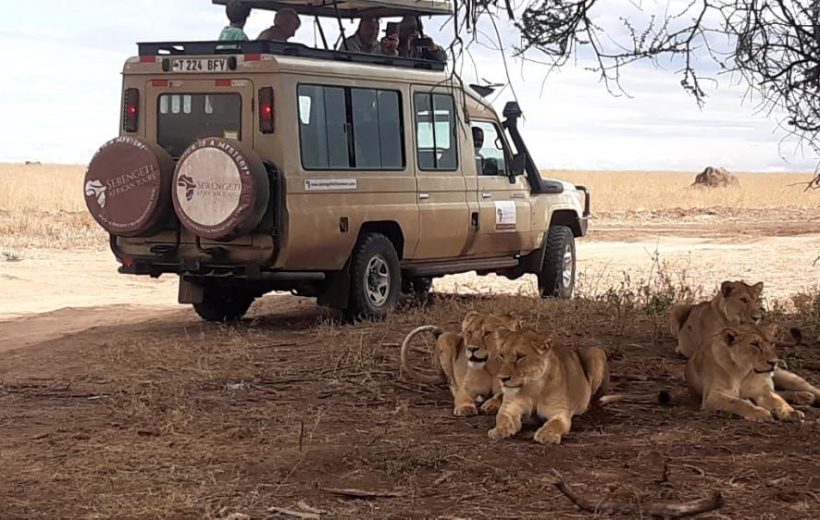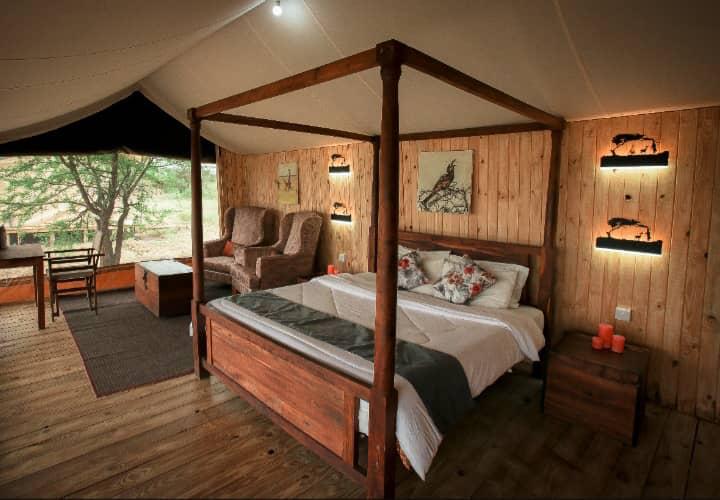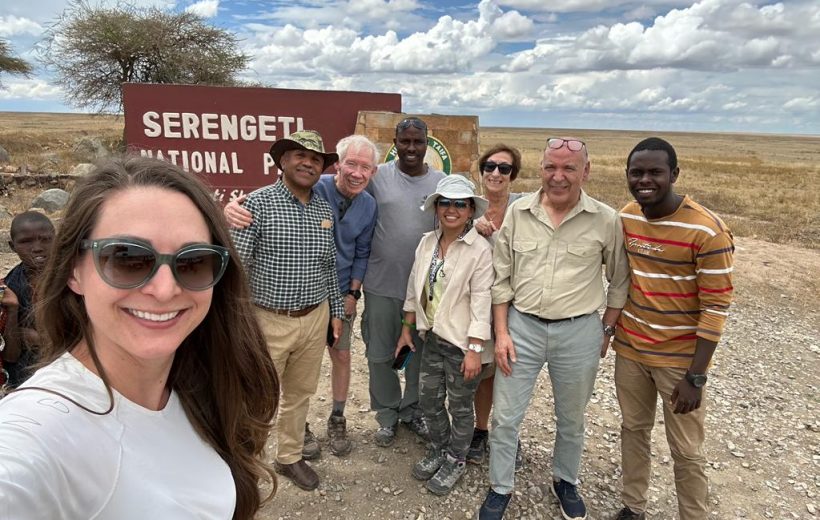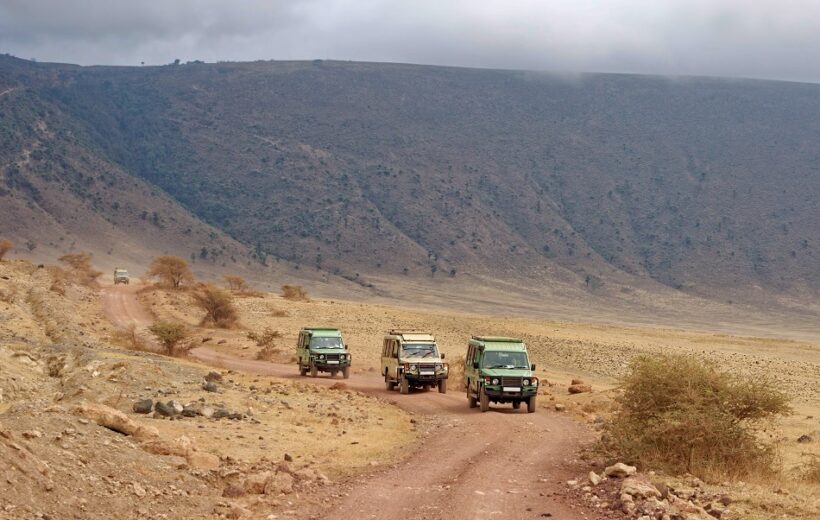Overview
The Ngorongoro Crater was formed when a large volcano erupted and collapsed on itself. This explosion created a caldera (mistakenly crater) approximately two and a half million years ago.
Within the Ngorongoro conservation area, different stunning attractions are found, starting with shifting sand, Ngorongoro, olmoti and empakaai craters.
The place is also famously known as the cradle of humankind. Within the greater Ngorongoro Conservation Area exists the Oldupai Gorge, a sharp gorge in the Great Rift Valley where paleoanthropologists Louis and Mark Leakey famously discovered traces of homo habilis, our first known human species, reaching back 2 million years. Mind blown!!
The Ngorongoro conservation area lies 75 miles (120 km) west of the Arusha town.
Apart from all of that, there is Lake Ndutu and Masek both alkaline soda lakes, that are home to rich game populations and are surrounded by peaks and extinct volcanoes, which create a stunning backdrop, completing the conservation area’s unique and beautiful landscape.
The Ngorongoro Conservation Area covers 8,292 square kilometres.
The caldera (Ngorongoro crater) measures between 10 and 12 miles (16 and 19 km) across (floor) the crater wall are 610 meters deep and have an area of 102 square miles (264 square km).
Ngorongoro conservation area was established in 1959 as multiple land-use areas, designated to promote the conservation of natural resources, safeguard the interests of NCA indigenous residents and promote tourism activities.
When it was a volcano it’s thought to have been a similar size to Mount Kilimanjaro, one of the world’s highest mountains. Estimates height vary between 4,500 to 5,800 metres. NCA is a very unique protected area in the whole of Africa, this is because it is the only place where the conservation of natural resources integrates with human development.
HISTORY OF THE AREA.
Maasai tribe man in the Ngorongoro conservation area, Tanzania.
The area was named by the Maasai pastoralists (indigenous people) after the sound produced by their cowbells (ngoro-ngoro).
Oscar Bauman was the first European known to have set foot in Ngorongoro Crater in the year of 1892.
The area was once part of the Serengeti National park before being separated and designated as a conservation area in 1959. Maasai pastoralists living in Serengeti National Park were systematically relocated to Ngorongoro, increasing the population of Maasai and livestock living in the Crater.
WHY VISIT THE NGORONGORO.
Firstly, the area is Highly accessible from the main tourist city, Arusha.
Ngorongoro Conservation Area is reasonably close to Arusha, the main safari hub of Tanzania’s northern circuit safaris. It is only a 3hrs drive (170 km) down to Ngorongoro from Arusha.
World heritage site.
It is a dream of every traveller to go to as many world heritage sites as he/she can. Ngorongoro Conservation Area is a UNESCO World Heritage Site since the year of 1979. Its main features are the astonishing Ngorongoro crater which is famous for being the largest inactive and intact volcanic caldera in the whole world, shifting sand, culture and history of the people as well as Olduvai Gorge.
The abundance of biodiversity/landscapes.
Ngorongoro Conservation Area hosts a wide range of the world’s threatened species and incredibly dense wildlife. This gives travellers a chance to appreciate, experience and spot many animals including the ‘Big Five’.
The crater is also home to many lions, leopards and hyenas. Apart from the big five, other popular animals in the area are herds of buffalo, wildebeest, zebra, endangered black rhinos and a variety of bird species.
WHAT TO DO IN THE NGORONGORO CONSERVATION AREA.
Wildlife exploration.
Ngorongoro crater is filled with over 2500 animals starting with the herbivores, carnivores and birds. This makes it to be an ideal ground for African safari lovers.
It is possible to encounter the big five just within a single day during the Ngorongoro crater tour.
Ngorongoro conservation area can be visited throughout the year. But the best time which one can enjoy this magnificent area is during the dry season. This is because animals can be seen easily.
Visiting Olduvai Gorge.
In this Gorge, there is a museum that displays the history and information about the skull of early men around the Olduvai Gorge.
You will observe the Olduvai gorge from a higher vantage point, although there are other more beautiful parts of the gorge that you can get to via a short drive or walk – such as the large Olduvai (Olduvai kubwa).
Shifting Sand.
A semi-circular shaped black dune, composed of volcanic ash from the nearby volcanic mountain – Oldoinyo Lengai, that is moving slowly westwards across the Ngorongoro plains at a rate of about 15 to 20 metres per year.
The local Maasai people believe the shifting sand dunes have come from the nearby holy mountain Ol Doinyo Lengai, loosely translated as the Mountain of God (where God resides).
As a consequence, these dunes are also considered sacred by the Maasai, who convene by the dunes in cases of prolonged drought. On these occasions, a goat is sacrificed to the gods so that rain may come soon.
Walking on the footprints of ancestors (LAETOLI).
Laetoli is a remote location but it is a not to miss an adventure. Laetoli is home to a 27m long trail of hominid (ancestors of humans) footpaths that were left here over 3.7 million years ago.
This is the best place for you to come close to your ancestors, and marvel at how far humans have come since our humble beginnings.
Laetoli’s remote location makes it an incredibly adventurous place to visit as well- so even if you’re not a history buff, this is definitely a bucket list destination.
Empakaai crater.
You will love this place at the first sight. The alkaline lake in the middle of the crater with a flock of flamingos is surrounded by the steep forest walls of the caldera. Beyond it, is decorated with a stunning view of the only active volcanic mountain in Tanzania, the Ol Doniyo Lengai.
The lake is fenced by lush green forests with fig trees, blue monkeys, and colourful birds. You can also find buffalos, bushbucks waterbucks, and pink flamingos here.
Bird watching.
The Ngorongoro conservation area is considered a bird paradise. The area has a variety of bird species which make it to be the best spot for bird watching. The area supports a variety of birds such as kori bustard, larks, fiches and raptors.
BEST TIME TO VISIT THE NGORONGORO CONSERVATION AREA.
A buffalo in Ngorongoro crater.
The good news is, the Ngorongoro conservation area offers astonishing wildlife viewing all year round, however, the dry season starting from late June to October is the best time to visit the area.
This is because the grass of the crater will be short hence making it even easier to spot.
How to get to Ngorongoro Crater Conservation Area?
The best way of getting to Ngorongoro is by driving. the distance between Arusha city and Ngorongoro Crater is about 167km/ 103.8 mi (3 hours estimated drive time). From Kilimanjaro Airport, the distance is a bit longer (219 km / 136 mi, about 4.5 hours estimated drive time).
Where to stay.
No worries!
When visiting the area, you will be accommodated by your choice of yours. In the Ngorongoro conservation area, there are numbers of lodges and campsites to accommodate you according to your choice and budget. Some top lodges are located on the crater rim having magnificent views of the crater
BUDGET HOTELS INSIDE THE NGORONGORO CONSERVATION AREA.
Ngorongoro is one of the most visited destinations in Tanzania, there are few budget accommodation choices. In fact, camping is the only choice for those on a budget.
SIMBA A CAMPSITE.
(highly recommended for budget travellers).
Located just on the crater rim with an amazing crater view. Simba A campsite is one of the coolest and most beautiful campsites in the country.
Camping here with safari soles enjoying amazing food and animals will leave you with the best safari experience.
MEDIUM HOTELS IN NGORONGORO.
Here are some of the medium lodges in Ngorongoro.
Wildlife lodge, Rhino lodge and Pakulala tented camp.
LUXURY ACCOMMODATIONS IN NGORONGORO.
Luxury hotels dominate the Ngorongoro conservation area. From affordable luxury chains to the truly decadent, there are plenty of Ngorongoro crater rim hotels to choose from.
Asilia Highlands.
The spectacular Asilia highlands combines a cutting-edge, open design with an intimate setting within the lush forest that spreads along the slopes of the Olmoti crater.
Eight canvas and glass-domed suites draw their inspiration from the enchanting Maasai bomas that dot the landscape. Guests can expect warm and contemporary interiors that offer the perfect atmosphere to unwind after a successful day of game viewing.
NGORONGORO SOPA LODGE.
Facing the always magnificent sunsets to the west, and located at the highest point on Ngorongoro crater’s entire rim, Ngorongoro Sopa Lodge stands well over half a kilometre above the crater floor and offers unparalleled views across this enormous caldera.
LEMALA NGORONGORO TENTED CAMP.
Lemala Ngorongoro is warmly set in a lovely ancient acacia forest close to the rim of the magnificent Ngorongoro Crater. As it is located next to the quiet Lemala crater access road on the eastern side, a key advantage of staying at Lemala Ngorongoro is the quick and easy drive down to the crater floor in the morning.
Lemala guests usually have an hour’s head start over others descending via the far busier Seneto crater access road on the western rim. Game drives from camp may start as early as 6.15 am and guests can be down among Ngorongoro’s plentiful.
KARATU HOTELS.
(Just outside Ngorongoro conservation area).
This is another accommodation option in the Ngorongoro conservation area. Karatu has located just a short distance from the main entrance Ngorongoro Conservation Area gate, the Karatu town offers an affordable gateway to Ngorongoro Crater.
There is a number of luxury and budget lodges in Karatu town.
Here are the best Budget Lodges in Karatu.
Eileen’s Trees Inn
Eileen’s tree lodge is a fantastic and fun place to stay in Karatu. With its stunning gardens, locally inspired dining, and social owner. Eileen’s Trees is equally good for travellers on a budget or families looking to save some money.
The garden and swimming pool offer a great place for young and old alike to while away their afternoons.
BEST MEDIUM LODGE.
COUNTRY LODGE.
Country Lodge Karatu symbolizes simple country comforts, providing pleasant and affordable lodging in the heart of Tanzania’s rich and scenic highlands.
This might be the ideal Stepping Stone for safaris into Ngorongoro Crater and beyond, as well as other travellers visiting the area.
Bougainvillaea Lodge.
A sister lodge to Country Lodge, Bougainvillaea Lodge is a slightly more upmarket property with 32 quaint cottages for its guests to adore.
By far the most popular part of Bougainvillaea? Its large pool and gorgeous garden area!
LUXURY LODGES IN KARATU.
Ngorongoro Oldeani Mountain Lodge.
A colonial lodge located on an attractive hill with spectacular views of Oldeani Mountain and the Ngorongoro Crater Rim.
The lodge is raised up with 360-degree views that extend all the way to Lake Eyasi and Lake Manyara. The property is set on 40 acres of untouched lush green gardens and local vegetation with over 130 species of birds.
Gibbs Farm.
A combination of African wilderness and colonial charm, Gibbs Farm is an award-winning lodge providing guests with comfort, privacy, and a sense of closeness to nature.
Each of Gibbs Farm’s huts comes with a fireplace, hand-carved furniture, and both indoor and outdoor showers. Each is also uniquely adorned, so no two rooms are alike.
If quaint, rural allure is what you’re looking for, you’ve found it at Gibbs Farm.
So, it is clear that there are many more different types of accommodations found in both inside the Ngorongoro conservation area and outside nearby Karatu.
